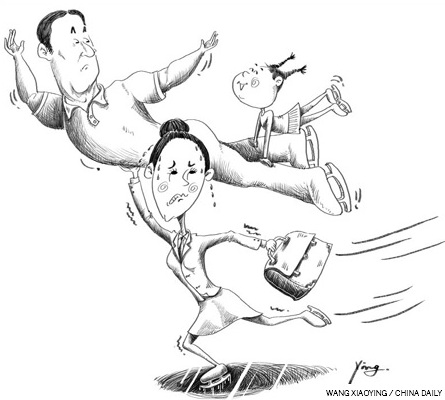Op-Ed Contributors
A turning point for gender equality in Asia
By Helen Clark (China Daily)
Updated: 2010-03-09 07:50
 |
Large Medium Small |

The Asia Pacific region has made impressive progress on many fronts, and seems poised to recover from the global economic recession more rapidly than other regions. Long term, sustainable progress, however, requires more support empower of women.
Achieving equality for women is not only a laudable goal and a human right. It is also good economics, helps deepen democracy and enables genuine long-term stability.
The latest Asia Pacific Human Development Report, Power, Voice and Rights: A Turning Point for Gender Equality in Asia and the Pacific, estimates that the under representation of women in the workforce is a heavy cost to the region in economic terms.
| ||||
For example, agricultural jobs account for more than 40 per cent of women's jobs in East Asia and 65 percent in South Asia. Yet, only 7 percent of the farms in these regions are controlled by women.
The inequalities don't stop there. There are large gaps worldwide between the political participation of men and of women. In the Asia Pacific, however, these gaps are among the largest in the world.
The Pacific sub-region alone has four of six countries with no women legislators at all.
In South Asia, on critical issues such as health, adult literacy, and economic participation, the gaps between men and women are wide by world standards.
According to this latest Human Development Report, almost half the adult women in South Asia are illiterate, a higher proportion than in any other region in the world. Women in South Asia can expect to live five fewer years than the world average of 70.9 years.
South Asia also has the highest malnutrition rates in the world - two out of every five children are underweight, compared to one in four in sub-Saharan Africa.
More women die in childbirth in South Asia - 500 for every 100,000 live births - than in any other part of the world except for sub-Saharan Africa.
To remove these obstacles, far reaching changes are needed in the interlinked areas of economics, social policy, politics, and law.
In the realm of economics, policies that ensure that women and men have the same inheritance rights and rights to land titles will put assets in the hands of women, and significantly improve their ability to make their voices heard inside and outside the home.
The Human Development Report estimates that increasing the proportion of women in the workforce to 70 percent, equivalent to the rate of many developed countries, would boost annual GDP by 2-4 percent in countries such as India and Malaysia.
Political reforms are needed so that more women can enter legislatures and positions of power.
This region has produced a number of women presidents and prime ministers. More women in power at every level will ensure that women's needs get higher priority than they currently do.
Nations in the Asia Pacific committed to achieving real progress for women when they signed the Millennium Declaration in 2000 and backed the Millennium Development Goals. Countries where the needs and status of women are given low priority, have made little progress on these goals. If women's status is lifted, that greatly improves the prospects for achieving the MDGs.
Reducing maternal mortality will also have positive spillover effects on the goal of improving children's health and access to education, and of reducing poverty and hunger. Providing girls with education will, in time, be positive in reducing child mortality, and improving child nutrition and health for future generations. Tackling the scourge of sexual- and gender-based violence not only addresses a basic human right, but also helps reverse the spread of HIV/AIDS.
The Millennium Development Goals summit at the United Nations this September is a major opportunity to show how prioritising meeting the needs of women can transform development progress.
On International Women's Day, we can all commit to these goals and to ensuring that women's needs are elevated, not marginalized.
The author is former prime minister of New Zealand and, is currently the administrator of UNDP and the chair of the UN Development Group.
(China Daily 03/09/2010 page10)













